Abstract
Eight techniques used by the author in teaching an introductory applied behavior analysis course are described: (a) a detailed study guide, (b) frequent tests, (c) composition of practice test questions, (d) in-class study groups, (e) fluency building with a computerized flash-card program, (f) bonus marks for participation during question-and-answer sessions, (g) student presentations that summarize and analyze recently published research, and (h) in-class behavior analysis of comic strips. Together, these techniques require an extensive amount of work by students. Nevertheless, students overwhelmingly prefer this approach to the traditional lecture-midterm-final format, and most earn an A as their final course grade.
Keywords: college instruction, behavior analysis, study guide, frequent tests, practice test questions, study groups, fluency, student presentations
Full text
PDF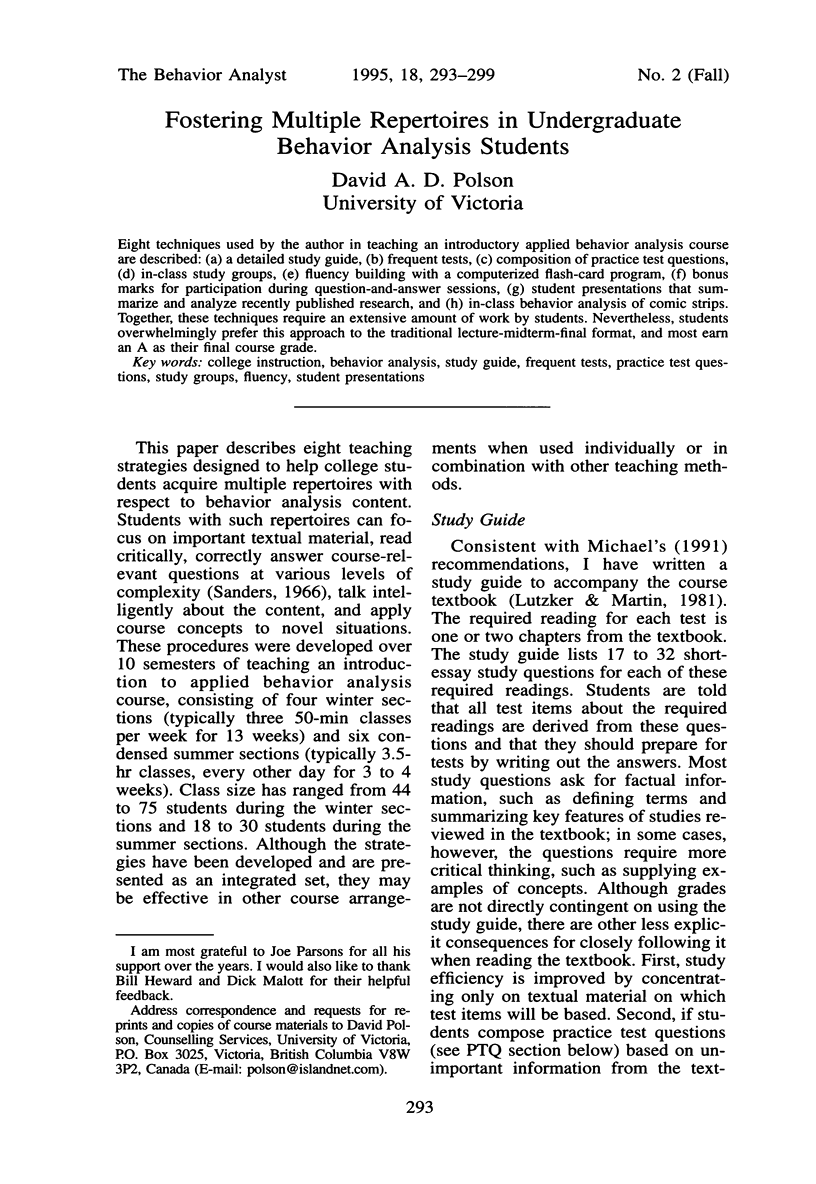
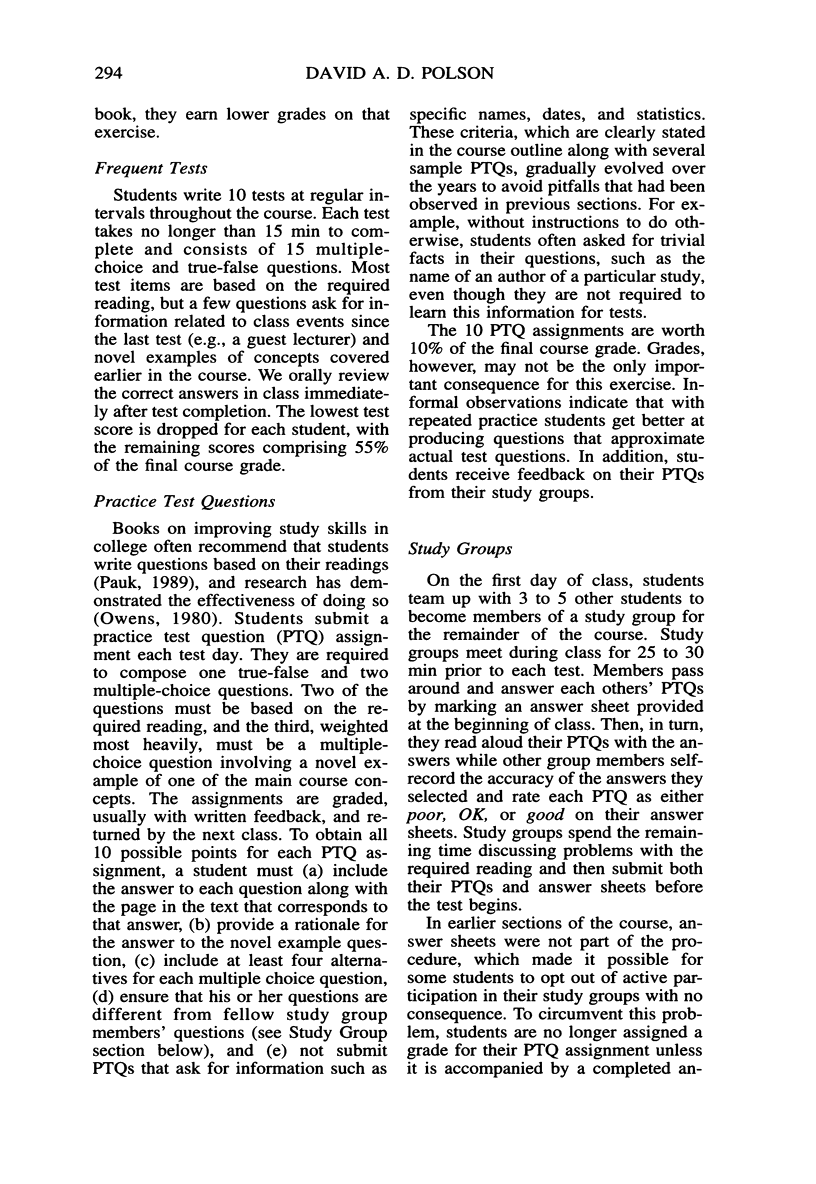
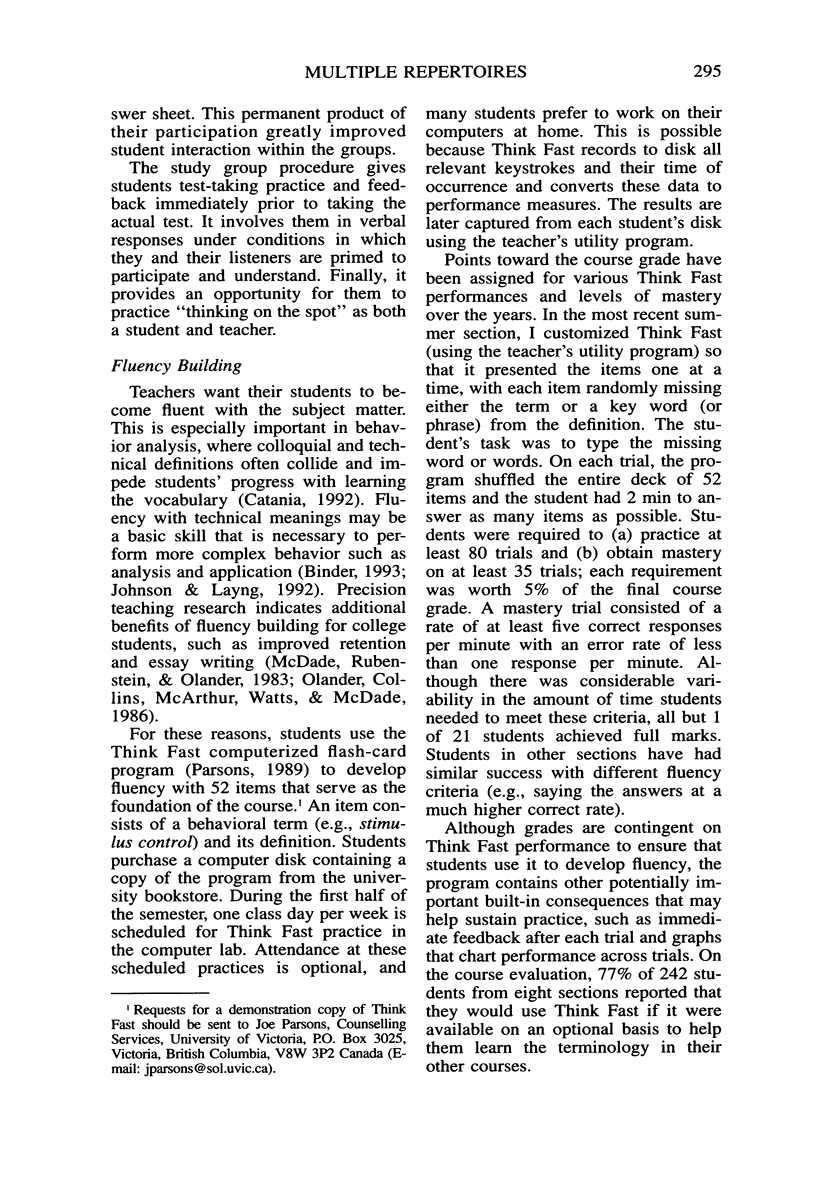
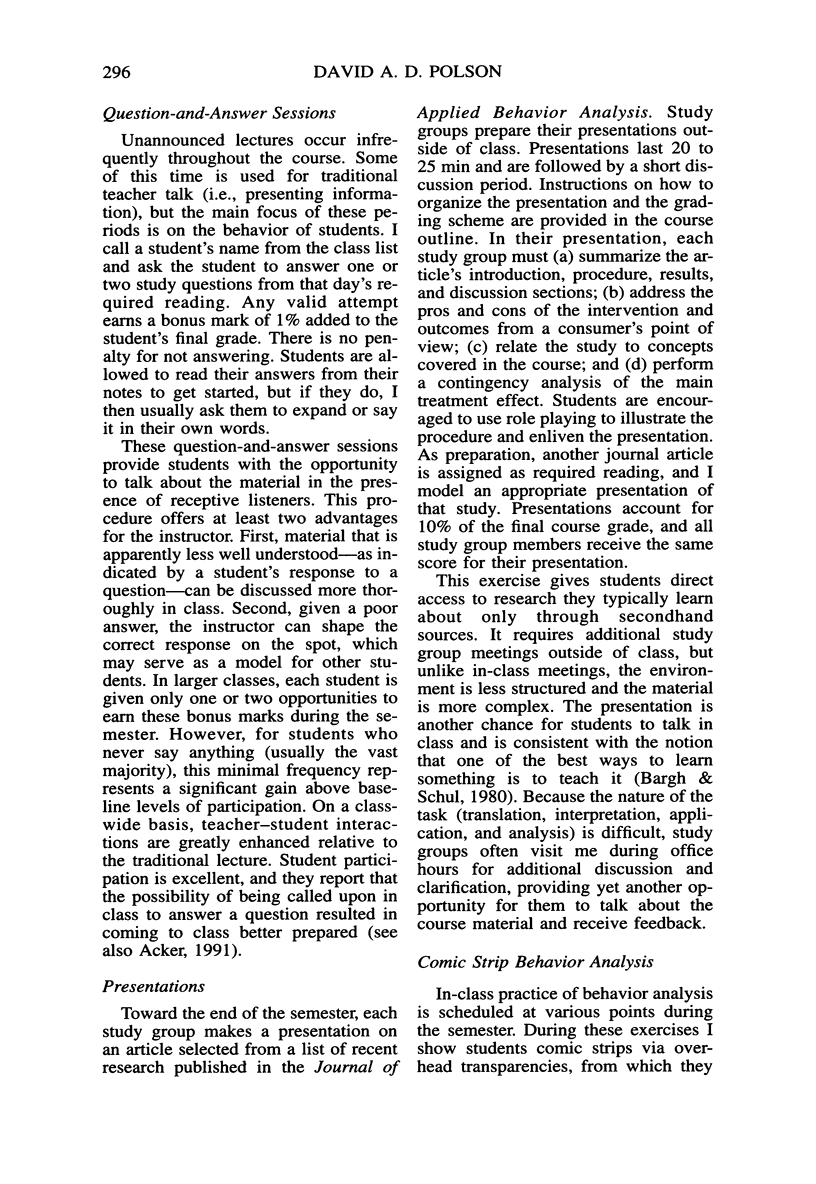
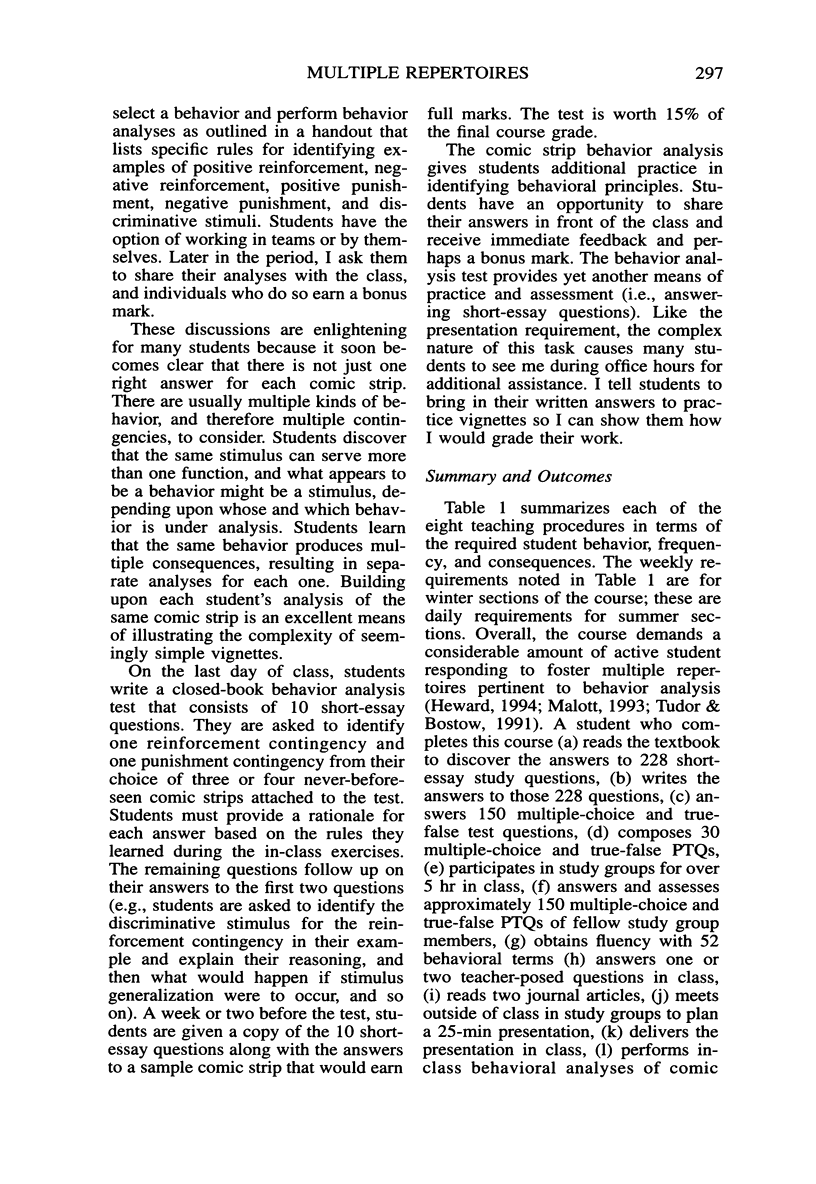
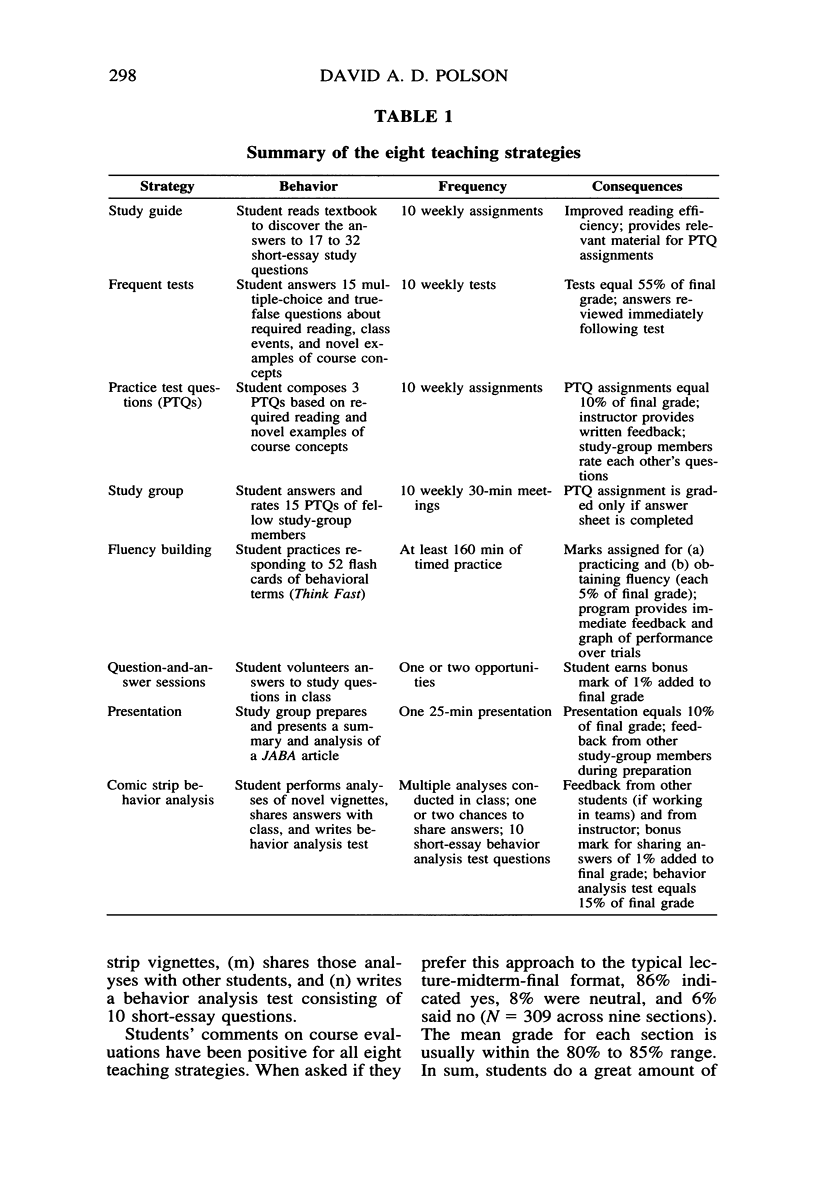
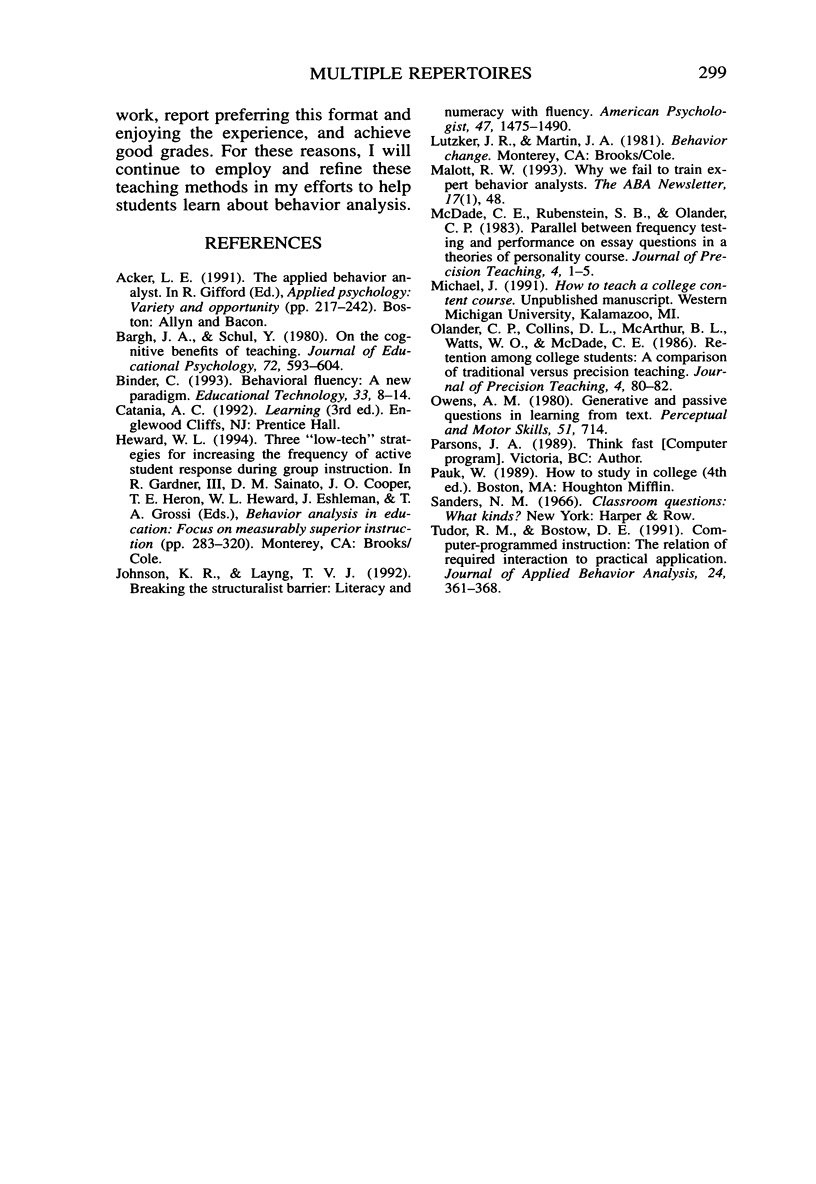
Selected References
These references are in PubMed. This may not be the complete list of references from this article.
- Collins D. W., Lange R. S. Medical-legal nurse consulting: patient advocacy in the new era of professionalism. Revolution. 1994 Winter;4(4):80–82. [PubMed] [Google Scholar]
- Johnson K. R., Layng T. V. Breaking the structuralist barrier. Literacy and numeracy with fluency. Am Psychol. 1992 Nov;47(11):1475–1490. doi: 10.1037//0003-066x.47.11.1475. [DOI] [PubMed] [Google Scholar]
- Tudor R. M., Bostow D. E. Computer-programmed instruction: The relation of required interaction to practical application. J Appl Behav Anal. 1991 Summer;24(2):361–368. doi: 10.1901/jaba.1991.24-361. [DOI] [PMC free article] [PubMed] [Google Scholar]


